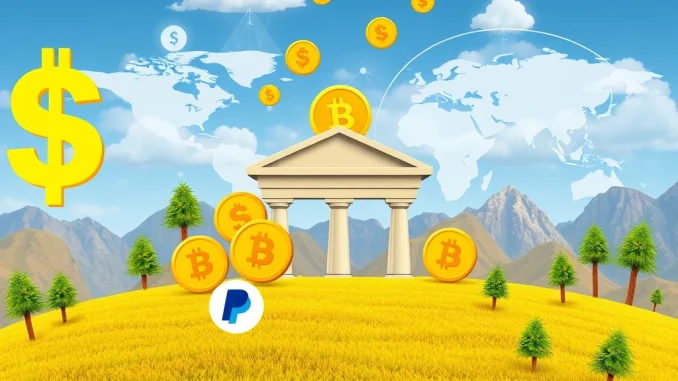
Are stablecoins the future of digital payments? Leaders from financial giants PayPal and MoneyGram believe so, but they stress that two traditional pillars – banks and clear regulation – are absolutely vital for widespread stablecoin adoption.
Why Banks are Essential Infrastructure for Stablecoin Adoption
Speaking at Consensus 2025, Jose Fernandez da Ponte, PayPal’s crypto head, highlighted the critical role banks play. Banks aren’t just places to store money; they provide fundamental infrastructure that connects the financial world. This includes:
- Handling large-scale transactions
- Providing on/off ramps for converting fiat to stablecoins and vice versa
- Offering established compliance and security frameworks
- Integrating with existing payment systems
Fernandez da Ponte’s perspective underscores that for stablecoins to move beyond niche crypto use cases and into mainstream finance, they need to leverage the existing plumbing provided by banks. This integration is key to making stablecoin adoption scalable and accessible to everyone, not just crypto enthusiasts.
How Clear Crypto Regulation Builds Trust and Drives Growth
MoneyGram CEO Anthony Soohoo echoed the sentiment, emphasizing the necessity of clear U.S. crypto regulation. Regulation isn’t just about compliance; it’s about building trust. For businesses and consumers to feel confident using stablecoins for everyday transactions, they need legal clarity and consumer protections. Soohoo’s point is simple: trust enables growth. Without a predictable regulatory environment, potential users remain hesitant, slowing down the path to mass adoption.
Real-World Stablecoin Use Cases: Beyond the Hype
Both executives pointed to current real-world applications demonstrating the utility of stablecoins, particularly in emerging markets. While much of the crypto discussion focuses on trading and speculation, stablecoins are quietly solving real problems:
- Faster Cross-Border Payments: Stablecoins can offer quicker and cheaper international money transfers compared to traditional methods, a core business for companies like MoneyGram.
- Financial Access in Unstable Economies: In countries facing currency volatility, stablecoins pegged to stable currencies like the USD can provide a reliable store of value and medium of exchange for individuals and businesses.
This focus on practical utility, rather than market hype, is what PayPal and MoneyGram believe will drive long-term, sustainable growth for stablecoins. The potential for MoneyGram stablecoin and PayPal stablecoin initiatives lies in solving these tangible financial challenges.
What’s Next for Stablecoins? New Issuers and Consolidation
Looking ahead, the executives discussed the evolving stablecoin landscape. They anticipate seeing new issuers enter the market, potentially including more traditional financial institutions leveraging their existing infrastructure (where banks crypto strategies come into play). This influx could lead to increased competition but also potential market consolidation over time, as stronger, more compliant stablecoin projects gain traction.
Conclusion: The Path Forward for Stablecoins
The message from PayPal and MoneyGram is clear: while stablecoins offer exciting possibilities for the future of finance, their widespread success hinges on collaboration with traditional institutions like banks and the establishment of clear, supportive regulation. Focusing on real utility and building trust through robust frameworks will be far more impactful than relying on market speculation. The journey to mass stablecoin adoption requires bridging the gap between the innovative world of digital assets and the established foundation of traditional finance.



